Platform
Use Cases
Many Possibilities. One Platform.
AI and Automation
The Always-on Incrementality Platform
Solutions
Teams
Built for your whole team.
Industries
Trusted by all verticals.
Mediums
Measure any type of ad spend
Use Cases
Many Possibilities. One Platform.
AI and Automation
The Always-on Incrementality Platform
Teams
Built for your whole team.
Industries
Trusted by all verticals.
Mediums
Measure any type of ad spend
(and how to measure in a Privacy-First World)

Now that we know that the tracking and measurement world will change as IDFA is deprecated, Cookies are almost gone, and user tracking is a thing of the past – measuring incrementality and calculating incremental sales lift becomes the best approach to measure advertising performance.
David Ogilvy was one of the most influential people in the history of Advertising. While most regard him as a creative mastermind, his belief was that Advertising is not a form of Entertainment. He didn’t want to be told how ‘creative’ his ads were. What he wanted was that the ads would be interesting so that you, the consumer, would buy the product.
Advertising has one goal – to produce Incremental Sales.
In his book, Ogilvy on Advertising, he writes:
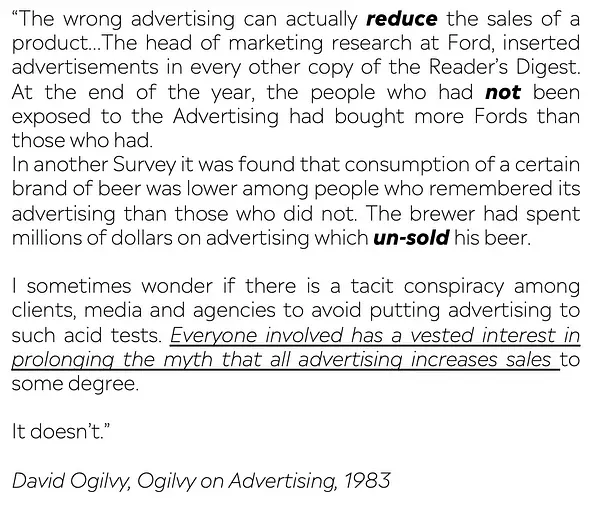
Unprecedent is the latest buzz word. We do live in unprecedented times. A global pandemic, Internet to the masses, all time high stock markets, access to capital, low interest rates, major disruption in access to data (IDFA deprecation), are just a few influencers about the disruption we’re experiencing.
Advertising today is not the same as it was during Ogilvy’s lifetime. Advertisers have unprecedented access to data, and so do media vendors and publishers.
Technology made gigantic leaps where media platforms are able to fully automate anything from ad creative production to audience targeting to produce sales results.
A growing sub category has been shaped in the last two decades – Performance Advertising.

Performance Advertising refers to advertising activities where Advertisers make strategic decisions based on attribution data, or even pays media vendors for attributable results, rather than paying for the media itself.
Some platforms became so good at understanding their audience, that they are able to provide good results from the first dollar spent by Advertisers.
While this sounds fantastic to most Advertisers – the trade off is that Advertisers cannot learn how to recreate the results with other vendors, developing a dependency on the vendors own optimization technology is supposably superior.
Performance Advertising has a big caveat. Relying on media vendors’ technology and optimization to produce results, may end up in cannibalization of results, rather than incrementality.
Ad Network Platforms depend on campaign performance data shared from attribution technologies (i.e. postbacks) to learn how to better advertise to users in order to produce results for the Advertiser to spend more of their budget with the platform.
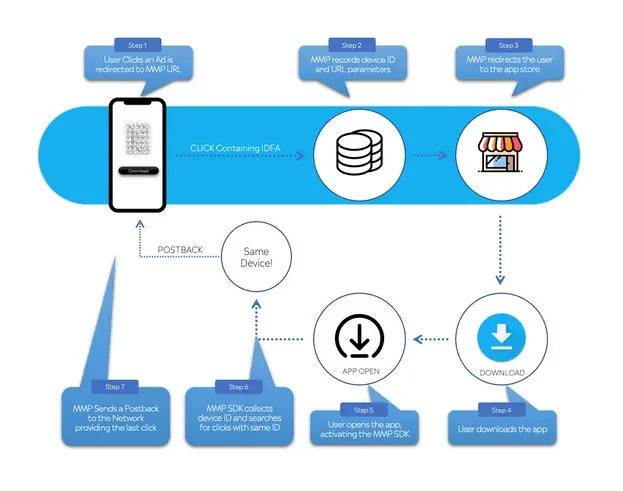
Advertisers dependent on reliable attribution data to make decisions. Data such as:
Attribution became synonymous with measurement, while it’s not the case.
Attribution provides tracking and matching. Tracking paid media inventories (i.e. impressions, clicks) and matching those to conversions using some sort of logic such as last-touch attribution or various other attribution methods.
Attribution reporting provides a deduplicated view of “which ad network generated the conversion” based on last-touch methods. Conversions tracked with no link to a click or an impression would be reported as “Organic” conversions.
Relying on attribution reporting data leads many marketers to mistake correlation with causality as the reports provide a deduplicated view showing campaign results from each media vendor as independent from one another:
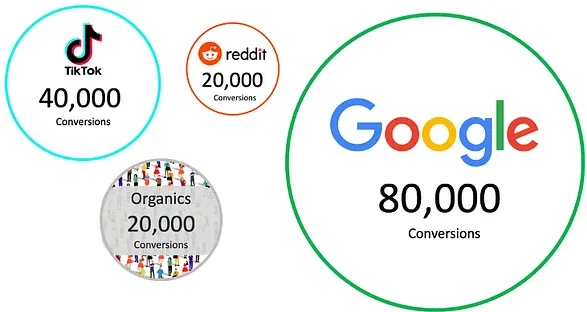
The reality is that there is a certain degree of overlap of users amongst publishers, which leads to over attribution, or what is called: marketing cannibalization. Cannibalization in Advertising refers to the Advertising activities claiming credit for revenues that would have happened even if it was not for the Advertising activities.
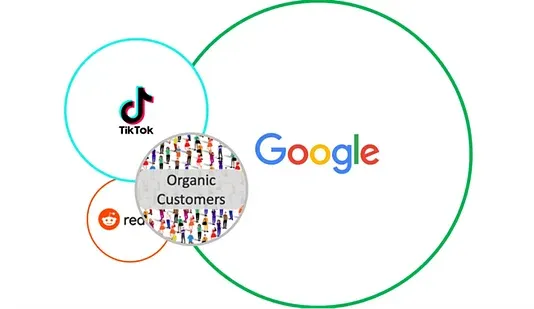
The reality is that there is a certain degree of overlap of users amongst publishers, which leads to over attribution, or what is called: marketing cannibalization. Cannibalization in Advertising refers to the Advertising activities claiming credit for revenues that would have happened even if it was not for the Advertising activities.
Attribution platforms are not able to report this overlap, leading marketers making decisions based on attribution reporting to experience substantial cannibalization of organic users as well as cannibalization across ad networks and media vendors.
Incremental Sales Lift is the goal of every marketer. If you win a couple of creative awards in the process, that’s a bonus. But the only KPI that truly matters is Return on Investment (ROI).
Return on Advertising Spend has been used as a marketing goal in the digital advertising era. Marketers’ ability to attribute(!) spend directly to results caused a disconnect between Advertising campaigns generating results, and correlating to results.
Correlation is not causation, and as attribution provides an absolute view over the media source last “touching” the user before the conversion point, making drastic budget allocation decisions only based on this data is the equivalent of forming a football team where only the Striker is allowed to touch the ball – or paying only the Striker in an 11 people team. 🤷

There are not many case studies available for cannibalization. No one wants to admit that the millions of dollars they spent on Advertising lead to no incremental sales.
The well-known cases were either the ones resulting in high profile lawsuits (for example: Uber vs. Ad Networks), or the ones resulting in very high efficiency gains (for example: AirBNB gains 95% of their traffic with no advertising)
The reason we don’t hear about cannibalization cases more frequently – is that no one is in a rush to expose their own vulnerabilities to the market.
While Attribution does not provide measurement over value, Advertisers are left with one form of measurement: Incrementality Testing.
Incrementality testing requires performing tests. Proactive, or Reactive.
Proactive Incremental Tests require Advertisers to turn campaigns on and off for periods of time, measuring the impact of Advertising over sales during the blackouts.
Most Advertisers find that the opportunity costs in performing blackout tests are far greater than the revenue gains.
Another method recently developed for incrementality testing, is a reactive test, allowing marketers to use marketing activities data as the triggers for advanced algorithms to process and analyze the incremental value of campaigns, media providers, and channels, without the need of any additional work to be done for the sake of the test.
This provides a directional insight that marketers can use to make strategic decisions and continuously improve the incrementality, while reducing cannibalization and improving ROI.
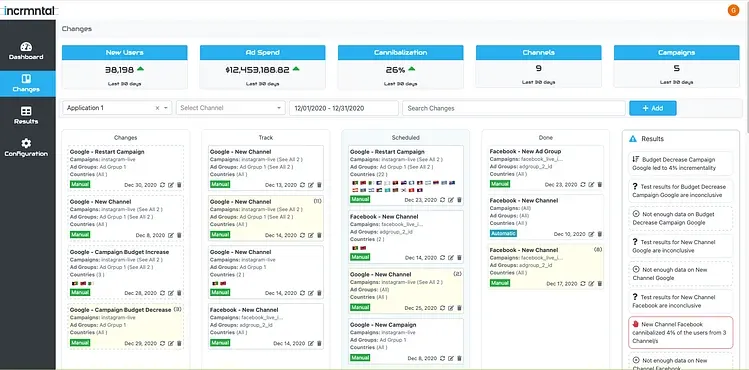

Maor is the CEO & Co-Founder at INCRMNTAL. With over 20 years of experience in the adtech and marketing technology space, Maor is well known as a thought leader in the areas of marketing measurement. Previously acting as Managing Director International at inneractive (acquired by Fyber), and as CEO at Applift (acquired by MGI/Verve Group)